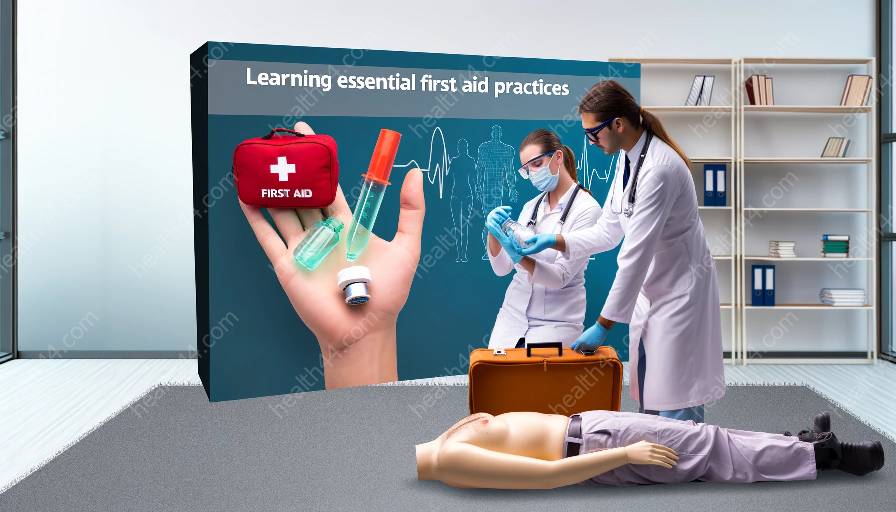Allergic reactions and anaphylaxis are serious medical emergencies that require immediate and appropriate intervention. This comprehensive guide will provide you with the knowledge and skills needed to effectively manage and respond to these critical situations. Whether you are seeking first aid training or simply looking to enhance your health education, understanding how to identify, treat, and prevent allergic reactions and anaphylaxis is essential.
Understanding Allergic Reactions
An allergic reaction occurs when the body's immune system overreacts to a substance that is normally harmless. Common allergens include certain foods, insect stings, medications, and latex. When a susceptible individual is exposed to an allergen, their immune system releases chemicals such as histamine, triggering a range of symptoms that can vary from mild to severe.
Symptoms of Allergic Reactions
The symptoms of an allergic reaction can manifest in different ways, affecting the skin, respiratory system, gastrointestinal tract, and cardiovascular system. Common symptoms include:
- Skin: Itching, hives, swelling (angioedema), and redness.
- Respiratory system: Wheezing, coughing, shortness of breath, and throat tightness.
- Gastrointestinal tract: Nausea, vomiting, abdominal pain, and diarrhea.
- Cardiovascular system: Rapid or weak pulse, low blood pressure, and fainting.
Recognizing Anaphylaxis
Anaphylaxis is a severe, life-threatening allergic reaction that requires immediate medical attention. It can be triggered by the same allergens as a less severe allergic reaction, but the symptoms are more profound and can rapidly escalate. Anaphylaxis affects multiple organ systems and can lead to respiratory and cardiovascular collapse if not treated promptly.
Managing Allergic Reactions and Anaphylaxis
Proper management of allergic reactions and anaphylaxis involves a combination of prevention, recognition, and intervention. If you encounter someone experiencing an allergic reaction or anaphylaxis, it is crucial to act quickly and decisively to minimize the risk of complications and potentially save a life.
First Aid Response
In the context of first aid, it is essential to follow established protocols for managing allergic reactions and anaphylaxis. These protocols typically include the following key steps:
- Assess the Situation: Evaluate the individual's symptoms and gather information about potential triggers or allergens.
- Administer Medication: If the person has access to an epinephrine auto-injector (e.g., EpiPen), assist them in using it according to the instructions provided.
- Seek Emergency Assistance: Call for emergency medical help immediately, especially if the individual's condition is deteriorating rapidly or if they are unresponsive.
- Provide Supportive Care: Help the person maintain an open airway, assist with breathing if necessary, and position them comfortably while awaiting the arrival of emergency responders.
Health Education and Medical Training
For individuals seeking health education and medical training, understanding the principles of managing allergic reactions and anaphylaxis is an important component of their curriculum. It is essential for healthcare professionals, first responders, educators, and caregivers to be knowledgeable and proficient in recognizing and responding to these medical emergencies.
Formal training programs often cover topics such as:
- Identifying potential allergens and common triggers for allergic reactions and anaphylaxis.
- Administering epinephrine and other appropriate medications in different scenarios.
- Developing personalized allergy and anaphylaxis action plans for individuals at risk.
- Implementing preventive measures and strategies to minimize exposure to allergens in various settings.
Empowering Individuals with Knowledge
By equipping individuals with the necessary knowledge and skills to manage allergic reactions and anaphylaxis, we empower them to make informed decisions and take appropriate actions in emergency situations. Whether through interactive training sessions, educational resources, or community outreach programs, the dissemination of accurate and actionable information is vital for improving overall preparedness and response to allergic emergencies.
Conclusion
Managing allergic reactions and anaphylaxis requires a multidimensional approach that encompasses education, awareness, and practical skills. By understanding the underlying mechanisms of allergic reactions, recognizing the symptoms of anaphylaxis, and implementing effective management strategies, individuals can be better prepared to respond to these critical medical emergencies. Whether in the context of first aid, health education, or medical training, the ability to confidently and competently address allergic reactions and anaphylaxis is a valuable asset that can potentially save lives.



